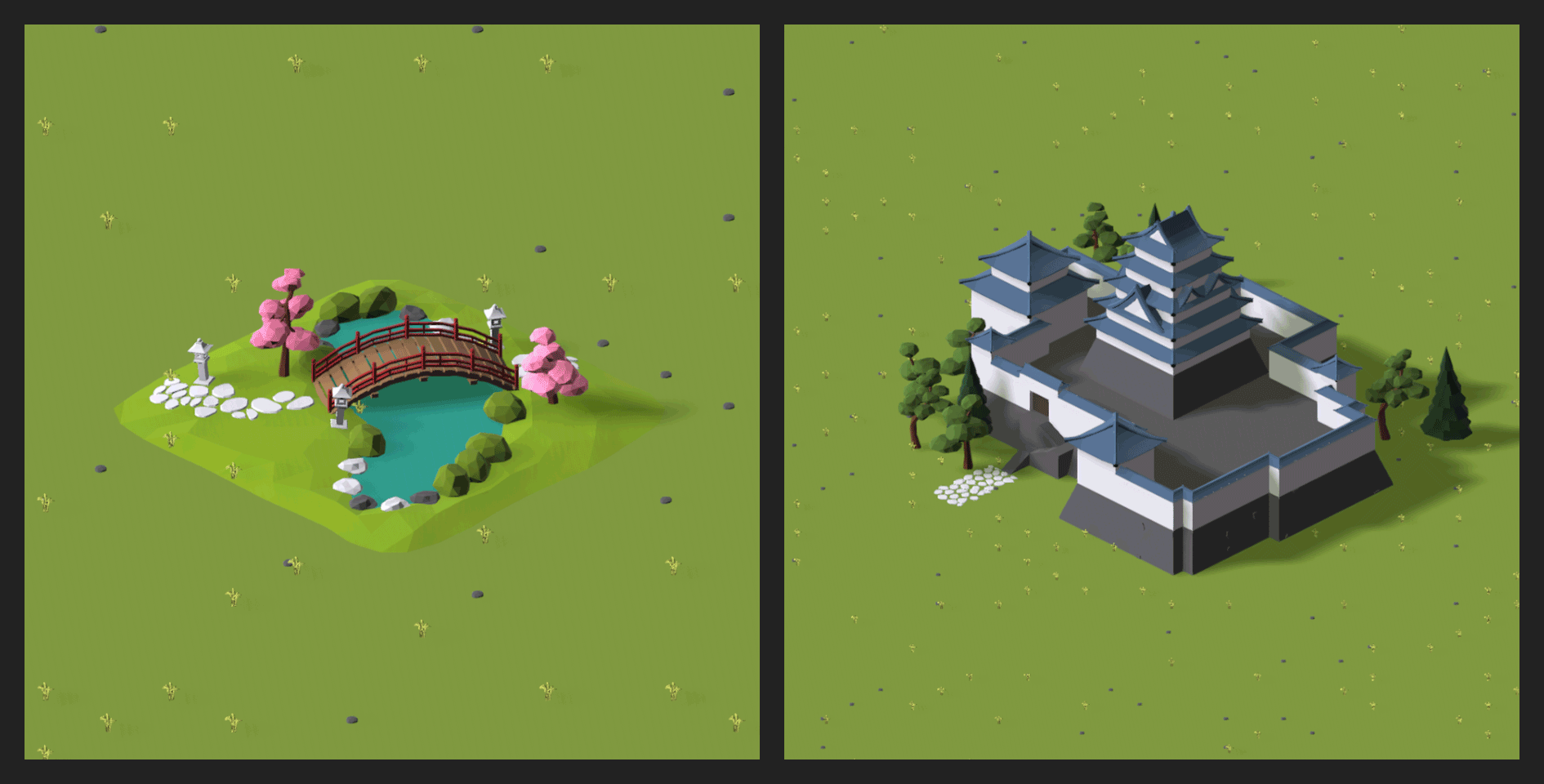Asset Modeling
During the concept phase of Tennō, it became clear, that we would need a lot of different buildings, so we decided to make them procedurally with Houdini. So I developed a Building Generator that would be used for the residential buildings and most of the production buildings. That has several advantages: One artist can easily create different buildings and serious changes can be made at any point during the production with a minimal amount of work.
Building Generator
The base shape of the buildings can have several different forms, from a simple square to a rectangle with adjustable length to L- shaped or t-shaped in different sizes. Using this shape as the basis, the generator places wall panels along the shape outline. These panels come in different predesigned forms that can be manually chosen for each panel, like wood, wall, windows, and doors.
Based on the architecture of feudal Japan and for better differentiation, the buildings can have different roof types: thatched, Yosemune, Irimoya, and a double Yosemune style roof. Buildings that gather resources like the Lumberjack and the Fishing Hut have a thatched roof, while production buildings like the Brewery have a Yosemune style roof. The Irimoya style roof was used for the residential buildings.
Buildings with a Yosemune or Irimoya style roof additionally can have an Engawa, a wooden porch that is running around the building. Steps leading up on the Engawa can then be added and positioned in front of the doors.
The result of this Building Generator is then used as the basis for the different buildings and props specific to their type are added, like different goods for the market, water basins and drying racks for the papermaker, or a kiln and ceramic vases for the ceramic kiln.

Special Buildings
Not all buildings, like the Farms, Castle, Garden, Shinto Shrine, and Buddhist Temple, could be realized with this system. While not all of these special buildings could be made fully procedurally, the Castle and the Garden have their own unique and quite different procedural systems.
The shape of the Castle can be changed based on a seed. Once the base shape is chosen, the position of the gate and the main building can be adjusted manually. Then, the amount and placement of the trees around the Castle can be adjusted.
The Garden, on the other hand, works quite differently. The artist can first choose between the wooden bridge or the stones in the pond and can select what type of tree they want. Then, most of the adaptation happens manually. The artist can go inside the HDA and adjust the shape of the pond and roads by editing the curves they are based on. The position and rotation of the trees and lamps are equally edible by hand. All assets have a system that generates the UVs automatically.

Get Tennō
Tennō
Singleplayer City-Builder set in feudal Japan
| Status | Released |
| Author | MoiraNight |
| Genre | Strategy, Simulation |
| Tags | Low-poly, Management, Real time strategy, Singleplayer, Unity |
| Languages | English |
More posts
- Pathfinding-SystemMay 30, 2022
- Configuration SystemMay 29, 2022
Leave a comment
Log in with itch.io to leave a comment.